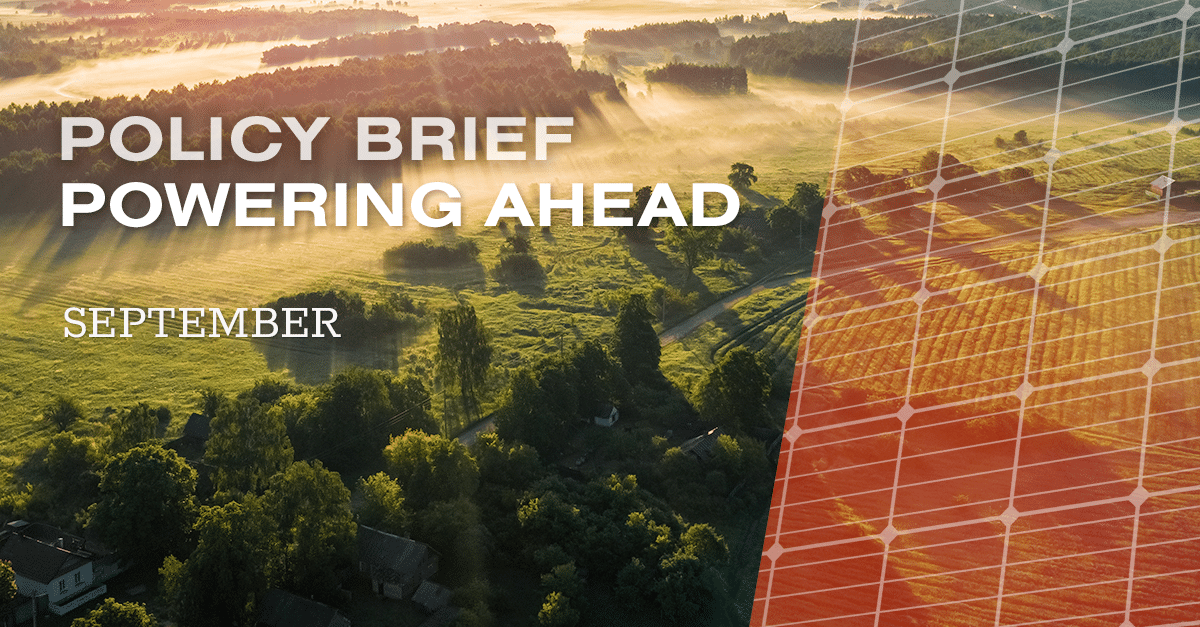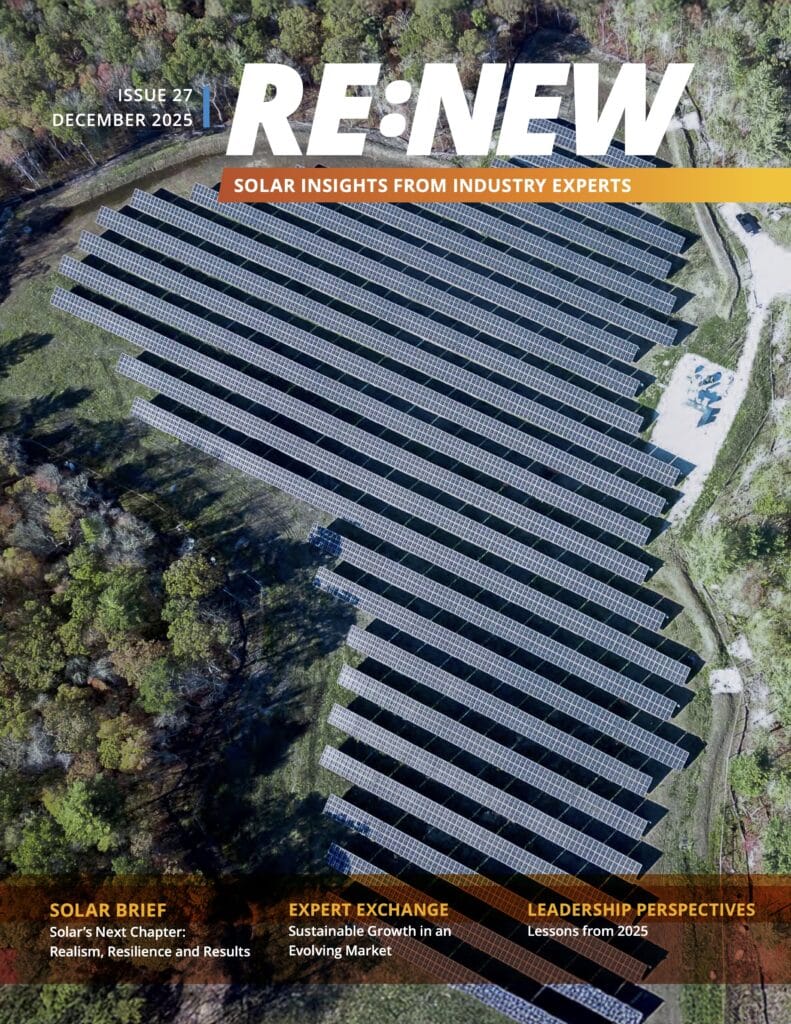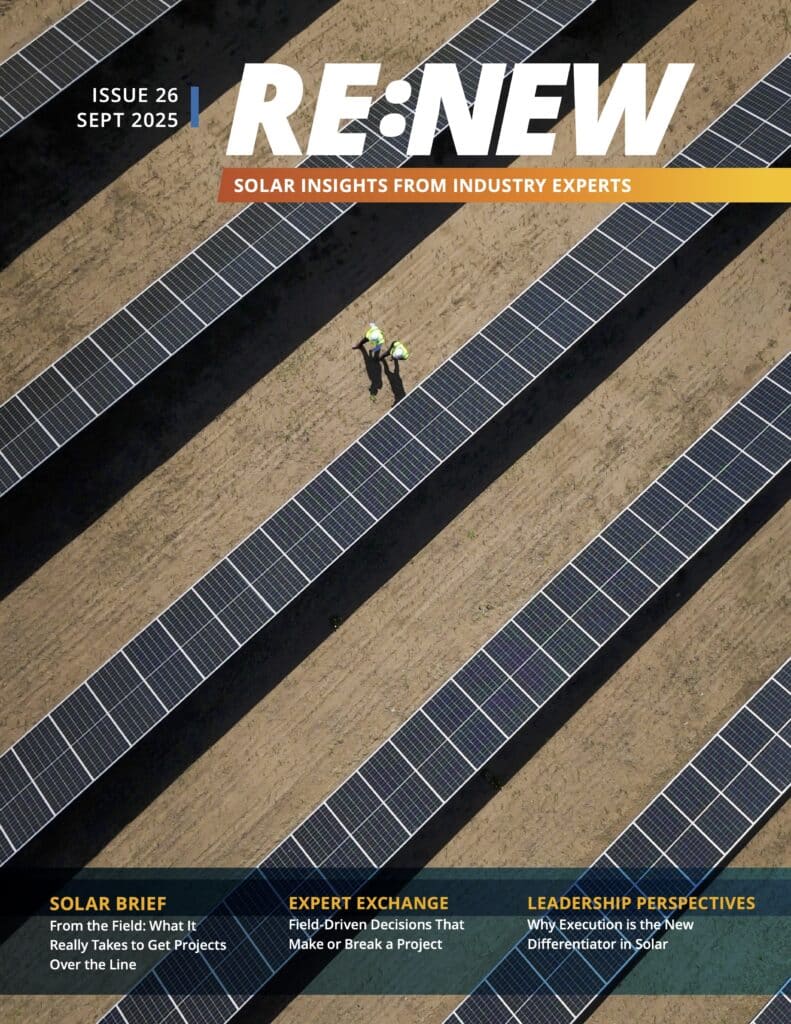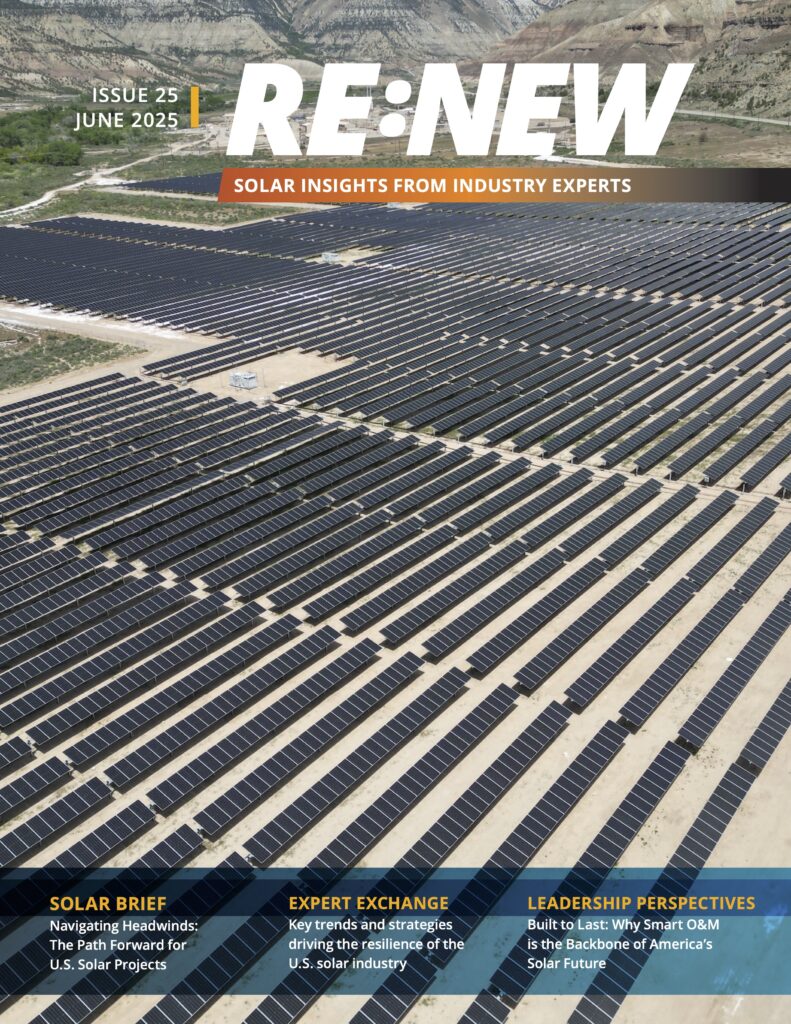As the 2024 presidential election looms, the renewable energy sector finds itself at a crossroads, with the fate of the Inflation Reduction Act (IRA) hanging in the balance. While this landmark legislation has spurred significant investments in clean energy, its future could be shaped by the results of November’s election. The stakes have never been higher for the solar industry, and as September unfolds, we’re closely monitoring the key legislative developments that could impact solar policy at both the federal and state levels.
Federal Updates: The IRA at a Turning Point
As we inch closer to election day, the future of the Inflation Reduction Act (IRA) remains uncertain. Enacted in August 2022, the IRA has been a game-changer for clean energy, funneling billions of dollars into solar manufacturing and other renewable technologies. According to the White House, the law has already spurred $17 billion in planned U.S. solar manufacturing investments, representing 126 new facilities or expansions. These investments have bolstered American manufacturing and catalyzed a surge in clean energy jobs. However, the election outcome could either reinforce or jeopardize these gains.
Republicans, led by nominee Donald Trump, have labeled the IRA a “Green New Scam,” vowing to roll back its provisions if they gain control of Congress and the White House. On the other hand, some GOP members, including 18 House Republicans, have acknowledged the economic benefits of the IRA, urging party leadership to preserve its energy tax credits, which have proven beneficial in their districts.
As we wrap up the legislative session, we are closely watching the bipartisan Energy Permitting Reform Act, which passed through the Senate Committee on Energy and Natural Resources in July. This bill aims to streamline federal approvals for energy projects, addressing one of the key bottlenecks in the clean energy transition.
Northeast Update: Maintaining Regulatory Integrity
In the Northeast, the regulatory landscape remains dynamic. The New York Public Service Commission (PSC) made headlines in July when it denied National Grid’s petition to impose retroactive design changes on 45 projects with fully executed interconnection agreements. The decision has been seen as a win for regulatory stability, ensuring that projects already in the pipeline won’t face unexpected cost increases or delays.
Massachusetts, while missing an opportunity to pass energy legislation during its most recent session, may still push through a smaller climate package focusing on permitting and siting reforms. Meanwhile, the Department of Energy Resources (DOER) has proposed significant changes to the SMART Program, which could reshape how solar projects are incentivized in the state. Stay tuned for future developments from the DOER.
Mid-Atlantic Update: Community Solar at a Crossroads
In Pennsylvania, Community Solar remains stalled as the legislature remains in recess until September 23rd. While there’s still a narrow window for passage, advocates anticipate there we’ll need to reintroduce the bill in 2025.
New Jersey is moving forward with public discussions on potential changes to its Remote Net Metering (RNM) program, with a comment period that ended in late August.
Meanwhile, Maryland’s Public Service Commission approved the final Community Solar regulations on the 5th of September highlighting the transition from the pilot to permanent community solar program, with a hearing set for early September. Virginia continues to progress on finalizing the next phase of the Shared Solar program. As it stands, industry groups are collecting feedback to submit public comments on the proposed rules. More details to come.
Central Updates: Regulatory Shifts and New Beginnings
In the Midwest, Minnesota continues to move forward with its Community Solar Garden Program’s rate transition from the Applicable Retail Rate (ARR) to the Value of Solar (VOS), despite objections. The state’s Public Utilities Commission recently denied our industry’s petition for reconsideration, prompting plans for an appeal.
Both Georgia and Louisiana are showing early signs of interest in community solar, with hearings in August signaling potential forward momentum for 2025.
In Colorado, the Federal Energy Regulatory Commission (FERC) approved Tri-State’s Bring Your Own Resource (BYOR) proposal, making it easier for Cooperatives to self-generate solar power. This decision could significantly expand the state’s community solar and distributed generation markets.
Western Updates: New Laws and Program Expansions
Out West, Alaska Governor Mike Dunleavy signed SB 152 into law in mid-August, auhtorizing the Commission to begin creating a framework for the state’s first community solar program. While the law leaves many details to be determined by the state’s regulatory commission, it represents a significant step forward for solar in Alaska.
California also made notable progress with SB 1374, which revises virtual net metering (VNEM) rules for properties like apartment buildings and schools. This bill is expected to counteract recent regulatory changes that limited the self-consumption of onsite solar for multi-meter properties, offering new opportunities for the state’s solar sector.
In New Mexico, the Public Regulatory Commission (PRC) is in the final stages of gathering public input on the next phase of the state’s community solar program. The commission is considering two scenarios—either waiting for the first batch of projects to be completed before deciding on an expansion or adding an additional 300 MW of capacity right away.
Looking Ahead: Preparing for a New Legislative Landscape
As we approach the end of 2024, the solar industry faces a critical moment. The upcoming election will likely determine the trajectory of the Inflation Reduction Act and, by extension, the future of renewable energy in the U.S. While regulatory progress continues at the state level, the broader political landscape could either accelerate or stifle the growth of community solar programs nationwide.
Stay tuned as we continue to monitor these developments and provide updates on the evolving legislative and regulatory landscape.
Until next time!
More Recent Blog Posts
Delivering on Our Promise: 2025 in Review
December 11, 2025
Scott Wiater · 3 min read
How Student Health Unlocks School Energy Projects
December 3, 2025
Standard Solar · 4 min read
The Remarkable Growth of Community Solar in the District of Columbia
October 22, 2025
Standard Solar · 2 min read
Navigating a Solar Market in Transition: Takeaways from RE+ 2025
September 26, 2025
Megan Byrn · 3 min read





Share